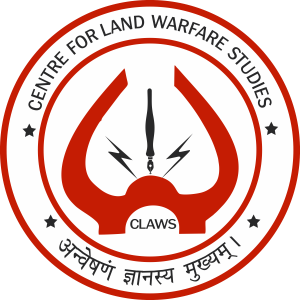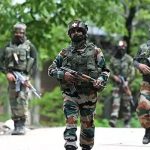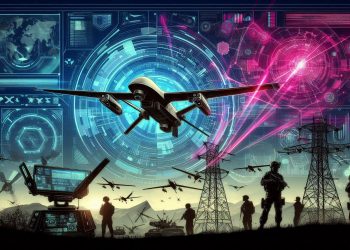
This article was originally published at: https://www.eurasiareview.com/10092025-theater-commands-in-india-joint-by-design-land-led-by-necessity-oped/
The notification of the Inter-Services Organisations (ISOs) (Command, Control, and Discipline) Act Rules has created a landmark shift in India’s defence management. For the first time, joint commanders have been empowered by law to plan, direct, and execute military operations across services.
This legal framework for jointness is a long-awaited step in streamlining command structures, breaking service silos, and enhancing warfighting efficiency. Yet, as the debate over the future of theatre commands intensifies, one truth stands out: while jointness is law, effectiveness demands that India’s theatres be led by the Army.
India’s security environment is unique. Its two primary adversaries — China and Pakistan — confront it on land. Unlike maritime powers such as the United States or the United Kingdom, India’s military challenges are overwhelmingly territorial, defined by disputed borders, contested mountains, and infiltration across the Line of Control (LoC).
Thus, while joint structures must integrate the strengths of all services, the operational reality dictates that the Army remains the centre of gravity of theatre commands.
ISO Rules 2025: Legal Foundation for Jointness
The ISO Act Rules represent the most significant reform in India’s higher defence organisation since independence. They formally empower joint commanders with operational control over all assets in their theatre, irrespective of service ownership. In effect, this creates a unified command chain where duplication, inter-service rivalry, and fragmented planning can be minimised.
This is a welcome step for a military that must increasingly fight in multi-domain environments: land, air, maritime, cyber, and space. However, the letter of the law does not resolve the question of leadership. The rules mandate jointness, but do not stipulate which service should dominate the structure. That choice must be dictated by India’s geostrategic context.
The Army’s Scale Across Both Fronts
India’s 1.2-million-strong Army is the only service with the scale and depth to operate simultaneously on both the western and northern fronts. It is permanently deployed along the 3,488-km Line of Actual Control (LAC) with China and the 776-km Line of Control with Pakistan.
From the Siachen Glacier to Arunachal Pradesh, the Army is tasked with holding terrain, deterring incursions, and mounting offensive operations if required.
The Navy and Air Force, though critical, do not bear the burden of continuous deployment across contested frontiers. The IAF’s squadrons provide air defence, interdiction, and strike, while the Navy’s fleet secures sea lines of communication and projects deterrence in the Indian Ocean.
Their contributions are essential, but episodic and task-specific. The Army, by contrast, sustains the day-to-day defence of territory; something no other service can replicate.
This scale and permanence justify why theatre commands must be Army-led, with the other services integrated as supporting arms.
Land-Centric Threats Define India’s Reality
Strategic planners often invoke the glamour of air and naval warfare, pointing to technology, reach, and precision. But for India, the hard truth is that every political outcome of war will still be decided on land. Territory defines sovereignty. A buffer in Ladakh or a salient in Rajasthan matters more to national security than dominance over the Bay of Bengal.
Both Pakistan and China have pursued strategies that exploit land vulnerabilities. Pakistan relies on infiltration and proxy warfare across the LoC. China uses salami-slicing tactics in eastern Ladakh and Arunachal Pradesh, combining infrastructure build-up with grey-zone coercion. In both cases, the first line of deterrence and response is the Indian Army.
This land-centricity makes Army command not a matter of institutional pride, but of operational necessity.
Air and Naval Inputs as Tactical and Strategic Support
Critics of Army-led theatres often warn against sidelining the Air Force and Navy. But this is a false dichotomy. An Army commander-in-chief does not diminish their role; rather, it ensures their capabilities are channelled effectively.
Air power remains indispensable for close air support, interdiction, and deep-strike missions. Its flexibility allows concentration of force across sectors. Under Army-led theatres, the IAF’s assets can be allocated more responsively to battlefield needs rather than retained under centralised, service-centric control.
Naval power extends deterrence against Pakistan and balances China in the Indian Ocean. While naval operations are theatre-wide and strategic in nature, their primary contribution in joint war is to secure sea lines, block adversary naval forays, and provide missile and aviation support to land campaigns.
Both services bring unmatched strengths. But in the Indian context, they operate best when integrated into a land-centric campaign plan.
Jointness in Law, Land Leadership in Practice
The ISO Act Rules have made jointness irreversible and legally binding. Yet, effectiveness in joint warfare cannot be divorced from geography. India’s wars will continue to be fought, won, or lost on land.
Theatres must therefore reflect this reality: Army commanders in charge, Air and Naval leaders augmenting the fight with their critical roles. This structure does not diminish jointness; it strengthens it by aligning form with function.
As India’s defence reforms advance, one principle must remain clear: joint by law, Army in practice.













